Deputy Editor John McIlroy looks back at the best cars he’s ever driven including the Ferrari 458 Speciale and the Talbot Sunbeam Lotus
John fell in love with cars watching rallies in his Northern Irish homeland, and started his writing career reporting on the World Rally Championship. He turned to regular cars more than 15 years ago, and enjoys the thrill of hot hatches, the eco-buzz of EVs and the self-torture of studying the auction prices for heavily used BMW 840s.
Below you'll find our deputy editor's pick of the best cars he's ever driven and his views on why they stood out…
1. Ferrari 458 Speciale (2014)
All Ferraris are special in one way or another – but when the company really nails it, the results are spectacular. And this is the case with the 458 Speciale, my all-time greatest drive, and a car whose like we are all unlikely to experience again.
The extreme evolution of Ferrari’s mid-engined 458 Italia, the Speciale arrived towards the end of 2014, after being unveiled at the 2013 Frankfurt Motor Show. It came amid a glut of high-end, ultra-capable supercars: McLaren launched its evolution of the MP4-12C, the 650S, the same year. And Porsche’s hardcore 911, the GT3 RS, turned up around the same time as well.
Even so, the Speciale stood out. Its 4.5-litre V8 pumped out 597bhp – a gain of more than 30bhp over a regular 458 – and at the same time, a host of dietary measures shaved 90kg from the kerbweight, taking the car down to 1,395kg.
I drove the car in late 2014, on roads made greasy by early-morning frost. I was blown away by its colossal front-end bite – and how Ferrari’s electronics wizards had done an amazing job of delivering super-quick steering while still making the car usable by mere mortals. You could hustle a Speciale, using its plethora of drive modes to mete out an appropriate strength of safety net, leaning on the incredibly responsive (and fade-resistant) brakes.
Best supercars 2020
And the engine? It has to go down as one of Ferrari’s all-time classics. Its shrill note and astonishing throttle response made it an electrifying core of the vehicle’s charm – and with it screaming behind you, any stretch of empty road of more than 100 yards long could become an experience. I remember being asked at the time which of these newly launched supercars I preferred. And I remember replying that if I were offered the choice of the McLaren and the Porsche or just the 458 Speciale on its own, I’d go for the Ferrari.
Nothing has happened in the intervening years to change my mind on that. If I won the lottery tomorrow, the car I’d start hunting for would be the best 458 Speciale that I could lay my hands on. It was the ultimate sign-off for normally aspirated, mid-engined V8 Ferraris and is, by some way, the most thrilling car I’ve ever driven.
2. Volkswagen up! (2012)
Within the halls of power at the Volkswagen Group, the New Small Family platform is not considered a success on grounds of profitability. And that’s a great shame, because it has proven to motorists around the world that cheaper cars can be great to drive.
The NSF is a project started by the VW Group back in 2007 – although these days we know it better as the VW up!, Skoda Citigo and SEAT Mii. At one point the idea was to have these city cars featuring a rear-mounted engine; indeed, the concept that previewed it all had such a layout.
But then the bean-counters realised that it would have to be a bespoke powerplant that couldn’t be used anywhere else, so the focus shifted to a more conventional three-cylinder motor, positioned in the front, that could then be shared with everything from the VW Polo to the Skoda Octavia. This switch robbed the up! of some of its novelty value, but when the production model arrived in early 2012, it more than made up for it in other areas. The up! made great use of its short wheelbase to offer a practical, smartly finished cabin and a usable boot.
It was the way that the up! drove that set it apart from any city car before it, though. The 1.0-litre engine lacked a balancer shaft, but was supremely smooth and very willing, making the VW a hoot to hustle along an empty back road. The sophisticated ride had enough about it to keep the body roll in check, but sufficient compliance to dial out the worst that urban roads could throw at it. And the control weights – the steering and gearshift in particular – were beautifully judged.
Of course, all of these traits are still present today, even with electric drive. Which is why the up! and its sister vehicles remain favourites of mine.
3. Porsche 911 GTS (2011)
In normal, non-coronavirus times, we’re lucky in this industry to drive cars in locations around the world – so many places, in fact, that it can all become a bit of a blur. But there are cars that make times or places stand out – and the Porsche 911 GTS is one of them.
To recap, the original GTS was rolled out very late in the life of the 997 edition of the iconic sports car. The recipe was relatively simple, as they often are with some of the best Porsches: take the wide body from the 911 Turbo, slot in a 407bhp 3.8-litre naturally aspirated flat six (this is a 997, remember, so no turbocharging on the bulk of the range), fit a sports exhaust, widen the track, and reprofile the suspension with stiffer springs and anti-roll bars.
The result was a spectacular everyday performance car – in many ways the ultimate iteration of the 997 for anyone driving on the road. The chassis tweaks made the 911’s steering even crisper on turn-in, the ride was still tolerable on all but the worst surfaces, and when that 3.8 started to sing above 4,000rpm, it sounded like a racing engine.
Porsche decided to launch this vehicle in the United States, piggybacking activities at the Los Angeles Motor Show. I can still remember bits of the driving route, on pretty much deserted Californian back roads – and how! I’m no Porsche aficionado, but to me this car seemed to be all the 911 you could ever need. Frankly, it still does. Nearly a decade on from the 997 GTS’s launch, it seems that at least some of those who really know their 911s are in agreement. The car did dip in value after its launch, but these days a tidy 997 GTS manual coupé will set you back £65k or more.
4. BMW i3 (2013)
We’re increasingly accustomed to electric cars these days – so it’s easy to forget how big the early leaps were as manufacturers jumped into this new area of technology. The Nissan Leaf must go down as the first mass-market EV, but I don’t think any brand invested quite so much time and effort as BMW did with the i3.
I went on a serious deep dive in preparation for the i3’s launch, as BMW showed off how much thought it was putting into the project. Suffice it to say that not only have I visited the factory making the raw carbon-fibre strands that ultimately become the car’s passenger cell, I’ve also stood in the turbine hall (sealed off, thankfully) of the hydroelectric dam that produces the power for that plant.
There are some things the BMW isn’t brilliant at. The trick doors are a faff if anyone wants to get out of the back seats in a regular parking space. And the ride is a bit too firm for a city-focused vehicle – a sign that BMW’s engineers were determined that this tall, narrow car wouldn’t suffer ‘elk-test’ nightmares like the original Mercedes A-Class.
But so much of the i3 was brilliant for 2013 – and remains brilliant now. The cabin still feels a great place to be, with its mixture of recycled materials and wood finishes, and performance off the line is as good as you’ll find in pretty much any EV. And the way in which BMW’s engineers mastered the brake pedal modulation – that transition from harnessing brake energy to recharge the batteries to actually relying on good-old discs and pads – is still a benchmark for me.
Now, seven years after its debut, the i3 is still relevant, still being updated, and still a strong proposition. It is also still achingly cool.
5. Talbot Sunbeam Lotus (1980)
Okay, a slight confession here: objectively, the Sunbeam Lotus may not be one of the five best cars that I’ve ever driven – but it’s certainly the one that meant the most.
Back in the late seventies, Chrysler wanted to take on the Ford Escort in rallying. So when the Sunbeam three-door hatchback came along, the company’s competitions boss, Des O’Dell, looked for a powerful engine to give the small three-door hatchback a chance. He found it in the shape of a Lotus twin-cam motor, and before long Sunbeams were trundling off the line at Linwood near Glasgow, and being transported to an old aircraft hangar close to the sports car firm’s Norfolk HQ, where the engines and gearboxes were fitted. My father had a conventional Chrysler Sunbeam, and as a young boy, I was soon transfixed by the images of Henri Toivonen and Guy Frequelin hurling their Sunbeam Lotuses around on the world’s rally stages. They were successful, too, winning the 1981 World Rally Championship for Manufacturers.
The greatest 1980s hot hatchbacks
Around 20 years later, I bought a Sunbeam Lotus. It was a tidy, second-generation car in Moonstone Blue with black stripes. It was terrifying to drive on anything but a bone-dry road, with around 150bhp shifting less than a tonne of car through the rear wheels, and a chassis that was in effect little more than a shortened Avenger.
I lived the dream, then elected to sell the car before I allowed it to rot or put it through a hedge. I never came close to exploiting its potential, but if I close my eyes, I can still hear the sound of its twin Dellorto carburettors burbling away on a crisp, cold morning. And that will always be a part of me.
What's the best car you've ever driven? Let us know in the comments…
Source: Read Full Article


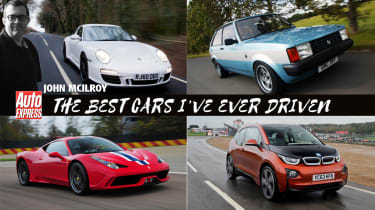
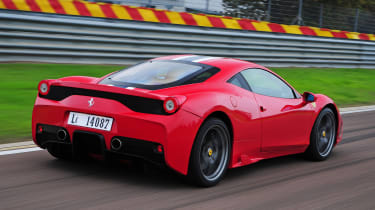
 Best supercars 2020
Best supercars 2020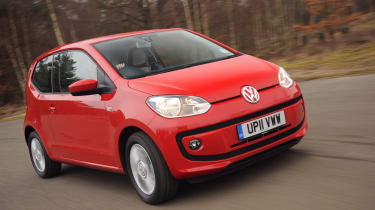
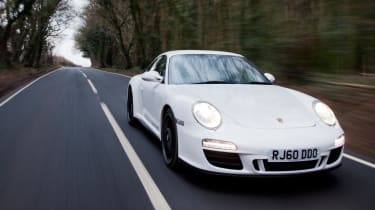
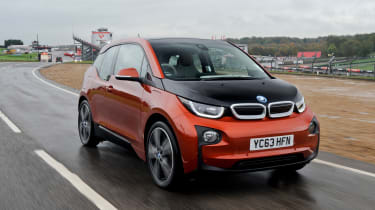

 The greatest 1980s hot hatchbacks
The greatest 1980s hot hatchbacks